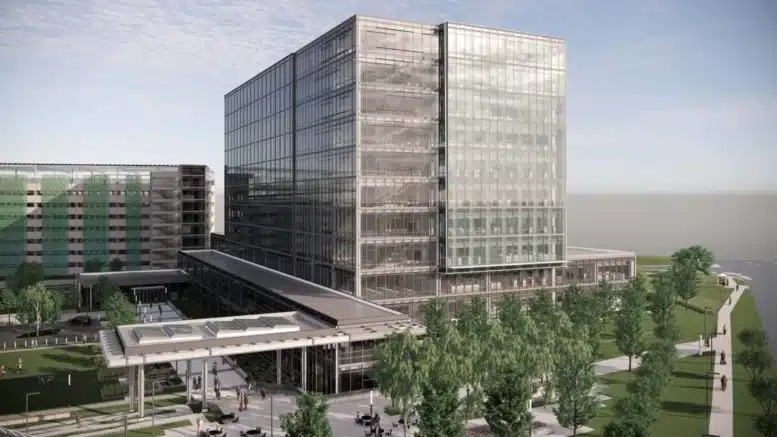Long underdeveloped section of Raleigh is primed for total transformation.
Take everything you thought you knew about West Raleigh and forget it. Set to be Raleigh’s next destination district, enter the Blue Ridge Corridor. An urban hotbed comprising the triangle from Blue Ridge to Western to Edwards Mill, “the area is emerging as the next second-tier urban center—like North Hills,” says Jeff Murison, executive director of the Blue Ridge Corridor Alliance (BRCA).
Already playing host to incredible assets via high-value, attracting destinations—a stadium and arena, a nationally recognized art museum, multiple parks and greenways, the NC State Fairgrounds, a world-renowned hospital, a Drive Shack, an arboretum, etc.—the region has so far lacked a “coherent sense of place, shared vision and community identity,” says Murison.
But all of that is being masterfully reenvisioned by an elite group of stakeholders that comprise the BRCA who worked in partnership with the City of Raleigh to commission a Blue Ridge Corridor study in 2012 (updated in 2017), aiming to create branded districts, mixed-use developments, green infrastructure and public transit based around existing community assets to ignite the region.
Championing urban redevelopment, existing and proposed projects have built a development pipeline with $1 billion+ in transit investments, plus a plethora of players investing an equal amount or more in public and private sector redevelopment to form a vibrant region. Think transformative projects like PNC Arena (see sidebar); Highwoods Properties, with whom we confirmed is developing DHHS Phase II/III in a public/private partnership with the city; not to mention Bandwidth’s highly anticipated HQ and the Triangle Bikeway connecting NCMA to Chapel Hill, among a dozen others.
“We’re focused on the in-fill—making these high-value venues and destinations all work together seamlessly, be more user-friendly and add value to each other,” says Murison. In essence, creating the BRC as a place people want to live, work and play.
With the potential to divide the corridor into distinctly viable and identifiable districts—wellness, research, arts and entertainment—the BRC is serving up what is arguably the biggest destination reconfiguration since Midtown. But the project has, so far, flown largely under the radar—despite the billions of dollars of investment pumping into the area.
That lack of conspicuity is ironically likely a result of its sheer grandeur. A spread out area—you don’t see six cranes in close proximity like you did in North Hills—it doesn’t have the concentration that Downtown and Midtown do “to get that same sort of tipping point feel like where you say, ‘Oh, my goodness—what’s going on here?’” says Murison. “It has 10 big gorillas, not one enormous gorilla in terms of super dominant players. And that just makes it different.”
Its simple location also makes it stand out—a veritable gold mine. Beyond its many key attractors, the area is also well-positioned just minutes from DTR near NC State, Meredith College and Umstead State Park, and in a way that you can get almost anywhere quickly—from RTP and RDU International Airport to North Raleigh, Midtown and Cary (especially Fenton).
While the work and live components have long been strong—the area houses ~9,500 residents and ~30,000 employed professionals who are naturally drawn to the area for its convenience alone—the wide swath of Raleigh has long lacked the “live” aspect. Read: Lunch, happy hour and quick-stop retail are very limited. And people have craved the vibrancy.
These projects come together to craft a complete community where you can experience that sought-after 15-minute radius lifestyle. “Within a 15-minute bubble,” says Murison, “you can work, shop, live, exercise, have fun—with everything you need at your fingertips. … As we advocate for continued investment, we want to see thoughtful additions that are designed to integrate into the community and add value to the existing stakeholders, so, in the end, it’s all a more attractive place to be and to visit than in the past.”
Now, with ~six projects currently under construction and over a dozen in the planning stages, the future of Raleigh’s next “it” district is well underway. “This is a very robust, healthy pipeline of development projects that add to the energy of the corridor,” says Murison. “There’s a lot of opportunity for this to be a high-achieving area.”

